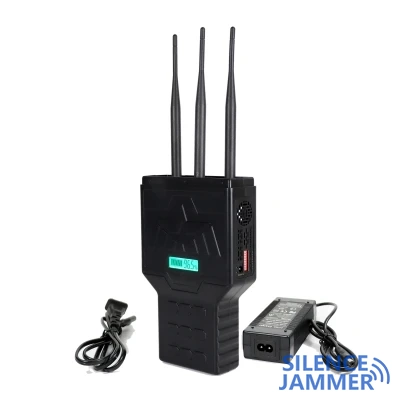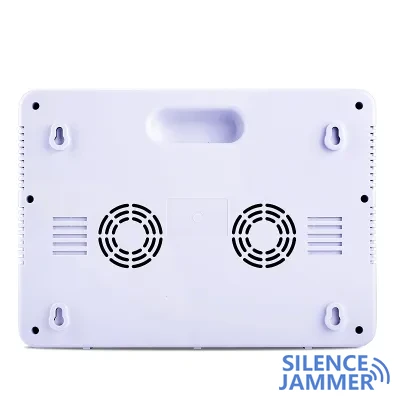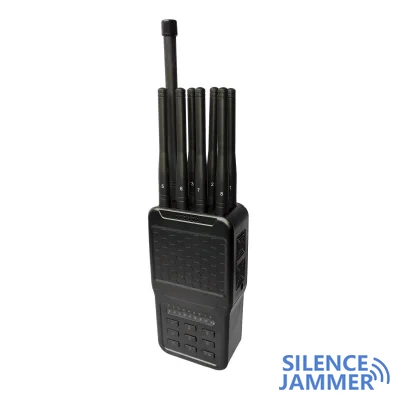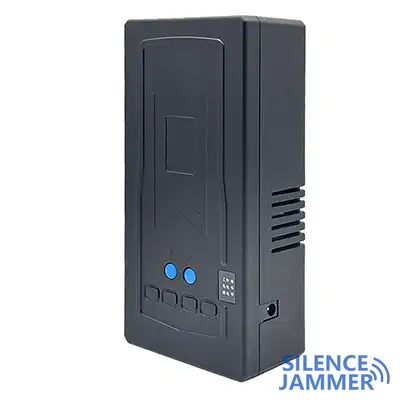A mobile phone signal jammer is a device used to interfere with or block mobile phone signals. It is widely used in examination rooms, conference rooms, cinemas, military bases and other places where silence or information needs to be kept confidential. Choosing the right signal jammer is crucial to ensure effectiveness and avoid unnecessary interference. This article will explore the differences between internal and external cell phone jammer devices, their pros and cons, and how to choose the right device.

Built-in cell phone signal jammer
advantage
- High concealment: Built-in jammers are usually installed inside the walls or ceilings of buildings and are difficult to detect. This is important for locations that require high confidentiality and protection against equipment vandalism.
- Good aesthetics: Since the equipment is hidden within the building structure, it will not affect the aesthetics and layout of the room.
- Controllable coverage: The built-in jammer can achieve precise coverage of specific areas through reasonable layout and antenna design, and avoid interference to irrelevant areas.
shortcoming
- Complex installation: Building modifications are required, which may involve complex work such as drilling and wiring, and the installation cost is high.
- Inconvenient maintenance: When equipment breaks down or needs to be upgraded, repair and replacement are not as convenient as external equipment, and additional building renovations may be required.
- Low flexibility: Once the installation location is determined, it is difficult to change at will and has poor adaptability.

External mobile phone signal jammer
advantage
- Easy installation: External equipment is usually an independent device that can be placed directly in the required area without the need for building modifications, and installation is quick and low-cost.
- Easy maintenance: When a fault occurs or needs to be upgraded, only the equipment itself needs to be operated, without involving changes to the building structure. Maintenance costs are low and efficiency is high.
- High flexibility: The placement of the equipment can be adjusted at any time as needed to adapt to different scenarios and needs.
shortcoming
- Poor concealment: The equipment is exposed to the outside and is easy to be discovered and destroyed, especially in public places, which may affect the use effect.
- Poor aesthetics: External equipment takes up space and may affect the indoor layout and aesthetics. This is especially important when used in high-end places.
- Limited coverage: The signal coverage of external devices may be limited by where they are placed, and is not as broad and even as the coverage of built-in devices.
How to choose a suitable mobile phone signal jammer?
Whether to choose a built-in or external mobile phone signal jammer needs to be decided based on specific application scenarios and needs. Here are some suggestions for selection:

Consider application locations
In places with high confidentiality: such as military bases, confidential government departments, confidential conference rooms, etc., it is recommended to choose built-in jammers to ensure that the equipment is concealed and difficult to be destroyed.
In public places: such as examination rooms, cinemas, lecture halls, etc., external jammers are more suitable, are easy to install, and can be flexibly adjusted according to needs.
Consider installation and maintenance costs
- Sufficient budget: If you have sufficient budget and have high requirements for aesthetics, you can choose a built-in jammer. Although the initial installation cost is higher, the long-term use effect is better.
- Limited budget: If you have a limited budget and need to deploy quickly, you can choose an external jammer, which is easy to install and has low maintenance costs.
Consider coverage and flexibility
- Large-area coverage: For places that require large-area coverage, such as large conference centers, exhibition halls, etc., the built-in jammer can achieve wider coverage through reasonable layout and antenna design.
- Small-scale coverage: For small-scale places that require flexible adjustment, such as temporary conference rooms, temporary examination rooms, etc., external jammers are more suitable and are easy to transport and adjust.
The final selection requires a combination of concealment, aesthetics, installation and maintenance costs, coverage, and the specific needs of the application site. By properly weighing these factors, choosing the appropriate type of cell phone signal jammer ensures that the device can operate efficiently and meet actual needs.



